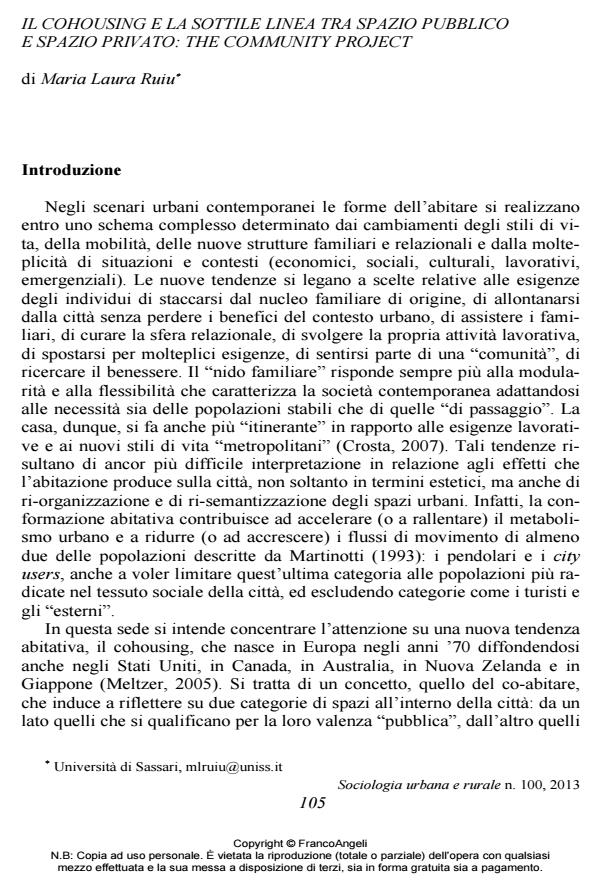Cohousing and the Thin Line between Public and Private Spaces: The Community Project
Journal title SOCIOLOGIA URBANA E RURALE
Author/s Maria Laura Ruiu
Publishing Year 2013 Issue 2013/100
Language Italian Pages 14 P. 105-118 File size 201 KB
DOI 10.3280/SUR2013-100008
DOI is like a bar code for intellectual property: to have more infomation
click here
Below, you can see the article first page
If you want to buy this article in PDF format, you can do it, following the instructions to buy download credits

FrancoAngeli is member of Publishers International Linking Association, Inc (PILA), a not-for-profit association which run the CrossRef service enabling links to and from online scholarly content.
The article focuses on cohousing phenomenon in order to identify what are public and private spaces within communities. It aims to trace both the influences that this new model of living may have in defining private and public space and the effects on the context where the communities rise. The phenomenon is analyzed in relation to two perspectives: the first one considers the relationships between members and the internal public/private dimension; the second considers the relationships between community spaces and the outside. Cohousing spaces could be defined as "semi-private" or "semi-public" in relation to the degree of opening or closure toward outside. The English case-study, The Community Project, shows the difficulty in classifying this new form of living in specific public or private categories.
Keywords: Cohousing, Way of Living, Communities, Neighborhood, Public Space, The Community Project
- Leco-housingen Italie entre rêve et réalité. Une recherche sur les aspirations à laco-résidence Francesca Bianchi, in International Review of Sociology /2015 pp.481
DOI: 10.1080/03906701.2015.1050308 - The Social Capital of Cohousing Communities Maria Laura Ruiu, in Sociology /2016 pp.400
DOI: 10.1177/0038038515573473 - Differences between Cohousing and Gated Communities. A Literature Review Maria L. Ruiu, in Sociological Inquiry /2014 pp.316
DOI: 10.1111/soin.12031 - Participatory processes in designing cohousing communities: the case of the community project Maria Laura Ruiu, in Housing and Society /2016 pp.168
DOI: 10.1080/08882746.2017.1363934
Maria Laura Ruiu, Il cohousing e la sottile linea tra spazio pubblico e spazio privato: the community project in "SOCIOLOGIA URBANA E RURALE" 100/2013, pp 105-118, DOI: 10.3280/SUR2013-100008